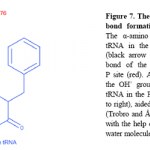infectious diseases
Within 15 minutes of my 6:00 am flight from Austin to Baltimore, I knew it was going to be a long, COLD, 3-hour trip. I'd already turned off the overhhad vents to stop the frigid air from blowing on me, and contorted myself into a ball on my seat trying to stay warm. As I visualized myself lounging in the hot sun, my light slumber was interrupted by a "DING!" coming from some seat ahead of me. Two rows up, a passenger had depressed the flight attendant call button to summon the Southwest Airlines crew member.
"May I get a blanket?" the woman passenger asked.
Like me, she must have felt the…
Cholera has killed roughly 3,800 people in Haiti and sickened another 189,000, and it will continue to circulate in the population for the foreseeable future. The good news is that the number of new cases per week has dropped from 12,000, which it reached in November, to about 4,700, and the mortality rate has also decreased. Intensive treatment and prevention efforts (including provision of clean water and educational campaigns) have saved thousands of lives, and will have to continue even as the attention of the international community wanes.
David Cyranoski of Nature News points out that…
By the end of 2011, the Labor Department's worker safety agencies expect to issue six new rules to better protect workers from on-the-job hazards. In the Department's regulatory plan issued yesterday, OSHA projects it will finalize four rules while MSHA expects to complete two new standards. As I've written before, these plans quickly become stale because target dates are missed, new issues emerge and political winds shift, but they still give us a snapshot inside the agencies and the Administration's regulatory strategies at a moment in time.
Of the four rules OSHA expects to finish in…
Today, is World AIDS Day, and while the pandemic continues to devastate millions of lives, we can also honor some achievements. CDC reports that when PEPFAR (the US President's Plan for AIDS Relief) started in 2003, fewer than 50,000 people in sub-Saharan Africa were getting antiretroviral drugs; now, thanks to a global collaboration, more than 5 million people in low- and middle-income countries receive this treatment. We've also seen some encouraging results from research on vaginal microbicidal gel and daily antiretrovirals to prevent new infections.
Care for the 33.4 million people living…
Haiti's health ministry has reported that the death toll from the cholera epidemic has reached 917, and 14,642 victims have been hospitalized. The disease has been detected in six of the country's ten provinces, and the World Health Organization predicts that 200,000 Haitians will fall ill with cholera over the next six to 12 months.
The UN has made a plea for nearly $164 million in order to supply doctors, medicines, and water-purification equipment. The BBC points out that less than 40% of the aid for Haiti's post-earthquake reconstruction has reached the country, and the first portion of…
In a recent New York Times article, Celia Dugger reports on encouraging results from two studies on interventions that help women in South Africa and Malawi reduce their risk of HIV infection. The first study found that women using a vaginal microbicidal gel were 39% less likely to contract HIV than those using a placebo. It has been published in Science, and its authors write in their abstract:
The CAPRISA 004 trial assessed effectiveness and safety of a 1% vaginal gel formulation of tenofovir, a nucleotide reverse transcriptase inhibitor, for the prevention of HIV acquisition in women. A…
On the heels of the recruitment of Deborah Blum to ScienceBlogs, I am happy to welcome journalist Maryn McKenna to our neck of the ether.
Her inaugural post can be read here.
McKenna's blog is called Superbug, reflecting the title of her most recent book, SUPERBUG: The Fatal Menace of MRSA, and her general interests in infectious diseases and food safety. Her 2004 book, BEATING BACK THE DEVIL: On The Front Lines with the Disease Detectives of the Epidemic Intelligence Service (of the US Centers for Disease Control and Prevention), named among Top Science Books of 2004 by Amazon.com and an "…
So, hi, Scienceblogs. I'm thrilled to be joining the conversation here.
By way of introduction, I'm Maryn McKenna, journalist and author and sole proprietor of Superbug, which has been running for 3+ years at Blogger but moves over here today, thanks to an invitation from the Sb staff and some extremely kind support from friends and colleagues who are already here.
Superbug began as online notes and digital whiteboard for my new book, SUPERBUG: The Fatal Menace of MRSA (Free Press/Simon & Schuster), which is a narrative investigation of the international epidemic of drug-resistant staph.…
For several years, health professionals have been concerned about the rise in infections from methicillin resistant staphylococcus aureus, or MRSA - a bacteria that's resistant to several of the antibiotics generally used to treat staph infections. CDC estimates that in 2005, there were more than 94,000 MRSA infections in the US, and more than 18,000 of those patients died. The numbers are probably much higher now.
A study just published in the journal Pediatrics gives us new information about staph infections in hospitalized US children and how they're being treated. The results show a…
Student guest post by Liz Stepniak
In the field of chronic disease, genetics has long been determined as a component of disease susceptibility. Infectious disease was believed to be caused by an agent of infection, such as a virus or bacteria which comprises a large environmental factor. In the past decade or so, this view has been expanded to include an important genetic factor as well.
There has been scientific evidence supporting the controversial idea that one error in a single gene can significantly alter the individual's risk of obtaining a bacterial infection. Can infectious…
Writer Amy Wallace just tweeted and posted to her blog the fabulous news that a pending libel case against her and physician Paul Offit has been dismissed.
Amy Wallace was the author of the centerpiece article in a Wired magazine feature on how antivaccination activists create fear and confusion by distorting and misrepresenting facts about vaccines. This article "An Epidemic of Fear: How Panicked Parents Skipping Shots Endangers Us All," was discussed in detail here back in October.
Two days before Christmas one of those individuals, Barbara Loe Fisher (also Arthur), filed a $1 million claim…
I'm always pleasantly surprised when a topic generates enthusiastic reader feedback, particularly when comments come from long-time readers who share experiences I never knew they had or, in some cases, comment for the first time.
The topic this time was a simple reflection on my current bout of pneumonia and my being taken aback by how debilitating it has been mentally. It's taken me two days just put put together these few sentences of what will essentially be a referral post.
A very thoughtful commenter posed a question to me about what does it mean to be "really sick." What is long-term…
I have just a couple of thoughts today that I offer to the reader not for sympathy but, rather, for scientific observation and reflection.
I've been dealing with a case of bronchitis that became pneumonia. I tried to teach through it, do grant reviews, finish a book chapter, etc. but was finally ordered by my pulmonologist to recuperative bedrest at home for approximately four weeks.
When told I'd be confined to bed for a month, I thought that it would be great - that I'd get two papers and a grant renewal done and still have plenty of time for blog posts I've been wanting to get to, finish…
Last week in Stockholm (and Oslo), the 2009 Nobel Prize winners were gloriously hosted while giving their lectures and receiving their medals and diplomas. In Chemistry this year, the Nobel was shared by Venkatraman Ramakrishnan, Thomas A Steitz, and Ada E Yonath for their studies on the structure and function of the ribosome, a remarkable nucleoprotein complex that catalyzes the rapid, coordinated formation of peptide bonds as instructed by messenger RNA. My post on the day of the announcement in October was designed to counter the inevitable (and now realized) criticisms that the prize was…
The region of southern Colorado on either side of the Sangre de Cristo Mountains is quite special to the Pharmboy family. The high plains to the east and San Luis Valley to the west are sparsely populated, stunningly beautiful with a veritable mine of geological treasures, and are unlikely to be built up in the PharmKid's lifetime. In fact, most counties down there have fewer people now than they did in 1900.
It is also rugged and you can easily die out there. Which gets you in touch with what matters.
Bighorn sheep and West Spanish Peak outside of La Veta, Colorado, about 60 miles east…
Denise Gellene in the New York Times is reporting this morning that Scottish physician, Sir John Crofton, passed away on 3 November at age 97.
Crofton is best known for implementing a combination drug regimen to treat tuberculosis, the insidious lung infection with Mycobacterium tuberculosis which decimated the US early last century and still kills 2 million a year worldwide. The concept of using drug combinations to increase individual drug potency and slow the emergence of resistance is now a mainstay of therapeutic approaches for cancer, HIV, and other infectious diseases.
Gellene…
Just a quick follow-up from our last two posts about Amy Wallace's article, "An Epidemic of Fear: How Panicked Parents Skipping Shots Endangers Us All," in Wired magazine about vaccine developer Dr Paul Offit and the anti-vaccination movement:
Wired has now compiled Wallace's tweets from the last two days into blog-readable narrative.
Only a week after Wired published "An Epidemic of Fear", we've received more reader responses than any other story in memory. Journalist Amy Wallace has received hundreds of messages, weighing in on all sides of the issue, and posted some of those comments on…
Welcome visitors coming from a recommendation by Dr Carmen Drahl at C&ENtral Science, the blog of the American Chemical Society's Chemical & Engineering News (C&EN):
Terra Sig has a fantastic post about the chemistry prize. The money quote: "If I see electrons being pushed around, it's chemistry."
Thank you for the kind words, Dr Drahl. New readers, feel free to weigh in down in the comments as to your take on this year's Chemistry prize.
The 2009 Nobel Prize in Chemistry has been awarded to three amazing scientists who elucidated the chemical bond-by-chemical bond action of the…
When writing the other day about how blogging has been of benefit to my career, I neglected to mention my recent invitation to the board of Science Communicators of North Carolina (SCONC).
Founded in June 2007 by Karl Leif Bates and Chris Brodie, and now headed by President Ernie Hood (Radio In Vivo), SCONC is a group of "science writers, journalists, public information officers, teachers and institutional communicators from academia, government labs, industry, museums and schools -- just about anyone interested in communicating science," who aim to improve public understanding of science…
Prof Tara Smith thought it important enough to come back from her hiatus to explain why she's doing the same for her kids.
That's why.
Addendum (20 Sept 2009): In my rush to put up a very quick post on Friday, I just saw that Revere at Effect Measure put up a detailed post on why we should always get the regular seasonal flu vaccine regardless of the current H1N1 pandemic.




